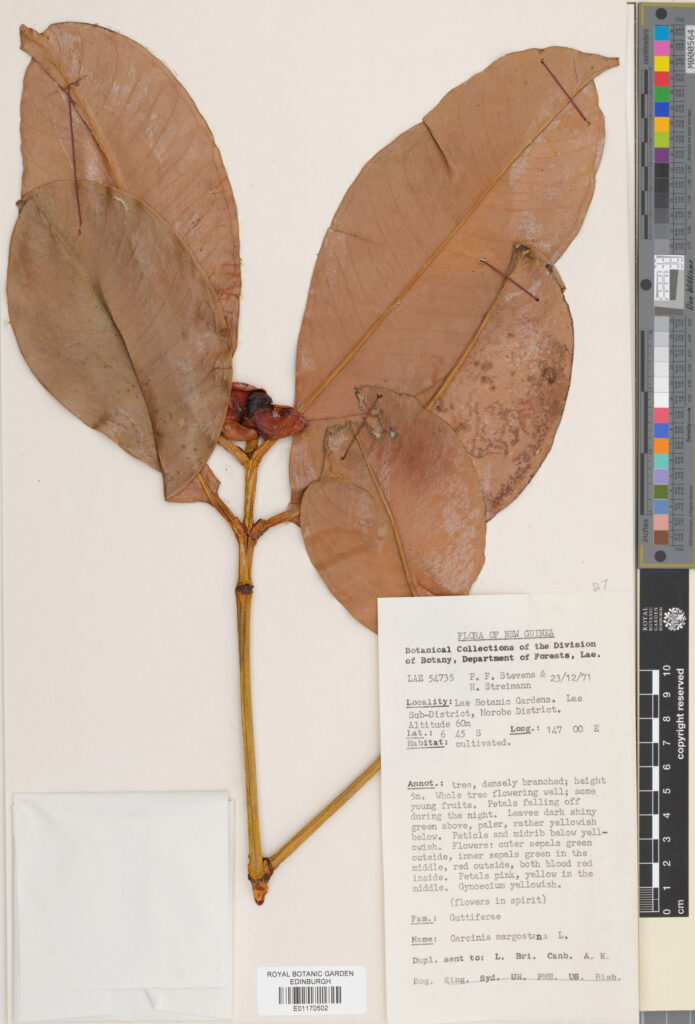The following blog was written by Linde Hess a digitiser in the Herbarium.
Since 2021 we have increased our digitisation capacity reaching 1 million specimens imaged in August 2024. Each digitiser is assigned a family of plants to work through. This series of blogs will spotlight the families that have been completed by a member of the team.
Guttiferae is a conserved name for this family and is the name we currently use in our collection, this family is also known as Clusiaceae.
The family consists mostly of trees and shrubs. Many species in this family yield useful timber, and a delicious tropical fruit, the mangosteen (Garcinia mangostana L.), belongs to this family.
Clusiaceae is named after Carolus Clusius. It was Carolus Clusius who founded one of the very first botanical gardens in 1590 in Leiden. Later, his experimenting with streaked and frilly tulips, affected with mosaic virus, led to tulipomania. Speculation drove tulip bulb Futures (a type of investment product) up to spectacular heights in 1636-1637 in Holland. If you’ve read this far, you were probably aware already of the phenomenon, if not, you can read more about it here and be amazed.
Today, most commodities, especially crops are still traded as Futures. Futures are legally binding contacts for the delivery of a particular commodity (wheat, rice, soybeans, etc) for a specified price at some point in the future. These contracts are standardized trading products that are traded on exchanges. One key feature of grain futures is that they allow farmers to lock in prices before harvest. Also see: https://rjofutures.rjobrien.com/rjo-university/grain-futures-what-they-are-how-theyre-traded. But I digress; back to the Guttiferae genera in our collection.

Our Collections
Before the start of the mass digitisation project we had 1193 specimens. After mass digitisation we now have 2272 specimens in our collection. We have 84 Types of this family in our collection.
Our collections can be viewed here.
Top 5 Regions
Most of our Guttiferae specimens have been collected in Malaysia.
| No. of Specimens | Herbarium Filing Region |
| 425 | Malay Islands |
| 233 | East Tropical South America |
| 230 | New Guinea |
| 214 | Indo-China |
| 166 | India, Bangladesh & Pakistan |
Top 5 Genera
The genus Garcinia takes up the most space in our collection; it is the largest genus within Guttiferae/Clusiaceae, consisting of over 400 species.
We have no members of Lebrunia in our herbarium. This is unsurprising as this genus is endemic to central Africa and consists of only one species, Lebrunia bushaie Staner.
| No. of Specimens | Genus |
| 1,058 | Garcinia |
| 503 | Calophyllum |
| 196 | Clusia |
| 124 | Mesua |
| 92 | Kielmeyera |
